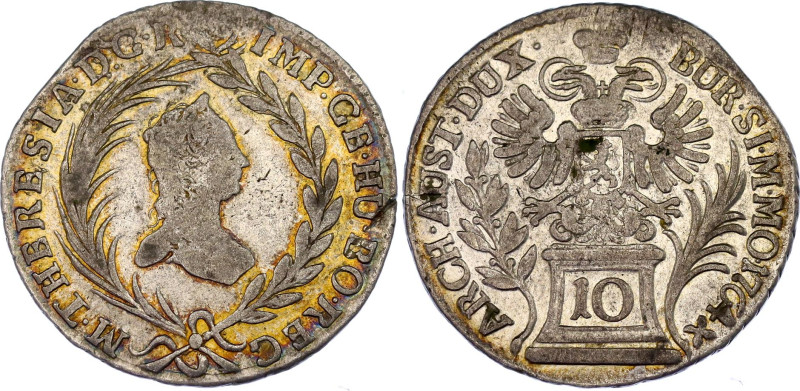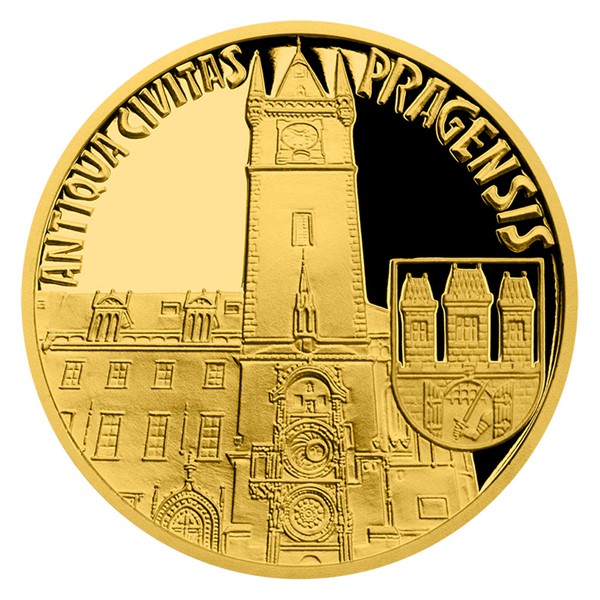Great News On Plaster Prague Mint Coins
Wiki Article
How Is A Plaster Mold Used To Make An Initial Physical Representation Of A Gold Coin Or Medal?
There are several steps involved in the making of the "maquette" which is a plaster mold inspired by the design of a gold or silver coin. The initial step is to utilize the design on the coin or medal as the basis for your design. The design could be a sketch made with a pencil, or it could be an image created digitally with graphic software. Clay or wax can also be utilized.
Plaster preparation - Plaster is combined with water to produce an easily-workable consistency. In order to ensure a clean mould the mix must be smooth and without lumps.
Create the base- The maquette is sculpted on an appropriate base or platform. The base could be a flat wooden surface, or an actual board.
The artist starts by creating a maquette of the gold design. The process involves shaping the plaster into relief, or a 3D representation of the medals or coins.
Refinement and detailThe artist focuses on enhancing details and the contours of the image, and also ensuring the accuracy of features and proportions in the design. This requires precision and attention to detail.
Allowing for Drying and SettingWhen the sculpting is complete, the plaster requires time to dry and set. The maquette will become hard and hold its shape.
Finalizing the Maquette - Following drying out, the maquette will be further smoothed to eliminate any bumps or rough spots.
Preservation and sealing- A sealant or protective coating may be put on the surface of the maquette to preserve it and make it ready for future processes like molding or scanning.
The final model of the maquette is the gold coin or medal design in a three-dimensional form. It serves as a guideline for the subsequent steps of production like digital reproduction, mold creation to make mass production, or for artists to improve and visualize the design before finalizing the. Have a look at the top rated Czechoslovakia gold medals plaster molds website examples. including gold morgan dollar, gold coin store near me, canadian gold maple leaf, gold price jm bullion, gold bullion price, one ounce gold bullion, gold medal of olympic, 100 grams gold biscuit, 1oz gold eagle coin, 1936 olympics jesse owens and more.

How Do Highly Skilled Engravers Enhance Gold-Plated Coins Or Medals Designs?
Working on the die, or the working hub, highly skilled engravers can refine and enhance the design of gold coin or medal. Their skills allow the addition of detailed details and perfect the design. This is the way they accomplish this Evaluation of Working Hub
Engravers first scrutinize the die or hub that was created from the hub originally designed by Janvier. They examine the transfer's quality and the depth.
Correction of Imperfections
Engravers are able to correct any flaws or inconsistencies within the transfered design. They may use precision tool to fix minor errors or adjust the depths or refine specific elements to ensure uniformity.
Enhancing Details
They are skilled at creating intricate details with tools for engraving, such as burins and pneumatic engraving tools and gravers. They cut or engrave the hub's surface to create intricate lines, textures or lettering according to the requirements of the design.
Dimensional Enhancement and Depth
Engravers manipulate depths and contours to give the design a visual depth. This process involves changing the depth of cuts to highlight specific elements and create an illusion of realism.
Texture & Finishing Touches
Engravers can provide texture or finish to certain areas of a design order to make it appear more attractive. Utilizing techniques such as stippling (or frosting) shading, stippling, or other kinds of shading, you can achieve different texture on the surface.
Inspection and Quality Control
In the course of engraving, engravers conduct periodic inspections and checks to make sure that the refined design is in line with the standards in terms of precision, clarity, and aesthetics.
Collaboration and artistic interpretation-
Engravers are often in close collaboration with designers and artists in order to make sure that designs are accurately interpreted. Their creative interpretation and expertise can elevate the designs by introducing subtle nuances or refining specific details according to artistic vision.
Highly skilled engravers can manipulate metal surfaces using accuracy and skill. Their focus and attention to detail enhances the design, quality and appearance of the gold coin or medal. See the recommended Prague Mint gold coin engravers blog advice. including gold american eagle price, coin gold bullion, gold and silver shops near me, $5 gold piece, 1 10 oz gold coin, gold bullion, gold dollar coin, american eagle gold coin, gold piece price, gold medal swimming and more.

How And Why Is It Possible To Achieve Certain Finishes Or Textures, Such As Matte Or Textured Surfaces?
This technique is employed for making specific finishes or textures like matte patterns, textured, or even textured surfaces on coins or medals. This method is used for a variety of reasons.
Surface preparation - The medal or the medal is put in a cabinet, chamber or nozzle connected to an air compressor. The chamber is typically enclosed to contain the abrasive materials used during the process.
Material selection for abrasive- High speed propulsion of fine particles of abrasive abrasives like silicon carbide or sand, or glass beads and aluminum oxide onto the surface.
High-Pressure Propulsion- The abrasive particles are driven onto the surface by compressed air or another high-pressure system. The texture or finish is determined by the force and speed at which the particles impact the surface.
Texture Creation- The force of the abrasive particles the surface creates a textured or matte appearance by changing the topography of the surface. The process may be used to selectively roughen certain areas or create uniform texture throughout the entire surface.
Controlled Application - Sandblasting intensity, duration, angle, and the application of sand can be controlled to produce various textures or surfaces. Different abrasives, pressure levels and abrasives produce different results.
Sandblasting is used for a variety of reasons.
Texture variations- Sandblasting enables the creation of different textures or surfaces such as mattes, frosted or grainy surfaces. This adds an aesthetic appeal and adds unique characteristics to the coins or the medals.
Aesthetic Improvement- Sandblasting changes the look of surfaces. It diffuses light reflections and reduces shine. This enhances the appearance of a medal or coin. Matte finishes, for instance, may highlight specific designs by reducing the the glare.
Anti-Glare Properties - Matte or the textured surfaces that are created through sandblasting can help reduce reflections and glare. This makes the coins or medals more visually attractive and more enjoyable to look at without interference from light.
Contrasting Design Elements. Sandblasting can create contrast between polished and the textured areas on the coin. It can be used to highlight certain design elements or to create visual depth.
Customization and Creativity - Sandblasting provides a variety of customization options, which allows to express your creativity and artistic flair, as well as the creation of medals and coins with unique designs or textures that are tailored to specific design requirements.
Sandblasting is an ingenuous technique that can be utilized on gold coins to achieve various surface textures. It also enhances the overall appearance of the medals. Check out the most popular sandblasting Prague Mint gold coins site recommendations. including gold coin store near me, gold apmex price, twenty dollar coin, $20 gold coin, gold dollar, cheerios sacagawea dollar, price of 5 dollar gold coin, medal gold medal, buy gold bars, buy gold biscuits from bank and more.

What Are The Quality Control Procedures That Gold Medals And Coins Undergo To Ensure That They Conform To The Specifications??
Following minting, gold coins or medals undergo rigorous quality inspections to ensure that they are in line with specifications as well as accuracy and surface quality. These checks involve several steps Visual Inspection-
The trained inspectors inspect every medal or coin for any surface defects, blemishes, or imperfections. They look for any markings, scratches, or other irregularities that might affect the look or value of a piece of coin.
Dimensions and weight-
Every coin or medal is measured and weighed to ensure that it meets the specifications for dimensions for weight, diameter, thickness, and overall dimensions according to the design specifications. Any deviations could signal an issue with the quality.
Metal Purity & Composition
The quality checks are carried out by using various testing methods like X-ray fluorescence analysis (XRF), or chemical analysis. They are able to ensure that they meet the requirements for gold content and quality standards.
Edge Inspection
The inspectors inspect the edges of the coins or medals for uniformity as well as the reeding (if there is) as well as any irregularities. The edges are a crucial location to incorporate security features, as well as additional design elements.
Strike Quality
It is crucial to evaluate the quality of each piece, for example the clarity and sharpness of the design, the relief and overall look. This will ensure that each piece is consistent.
Corrections to Minting and Proofing Errors
To find out if there are any flaws, imperfections or other irregularities An in-depth inspection is carried out on special editions of proof coins.
Packaging and Presentation
Quality checks extend to packaging and presentation to ensure that the coins or medals are securely sealed, stored, or presented in cases or holders, without any damage or contamination.
Random and Sampling Checks
Random sampling or checks are conducted throughout batches to ensure the standards of quality are met consistently throughout the minting process.
Compliance and Documentation
Every quality check must be documented in order to be in compliance with all laws, certification requirements, and standards for minting. These records are used to prove the authenticity of the coin and its quality.
Rejection Non-Conforming Items
To ensure the quality and integrity of minted products, coins or medals which are not in compliance with the specified standards are either discarded or sent to be reprocessed.
Mints and certification bodies perform these quality checks to ensure that gold medals and coins are in compliance with the standards of authenticity, purity, value and design. They also reassure collectors, consumers and investors that the coins and medals are authentic and high quality. Read the top Czechoslovakia gold medal quality control website advice. including olympic games gold medal, gold and coin near me, ancient coin, gold and bullion, hidilyn diaz, gold biscuit buy, gold and coin near me, michael phelps medal, 1 oz gold coin, gold panda coin and more.
